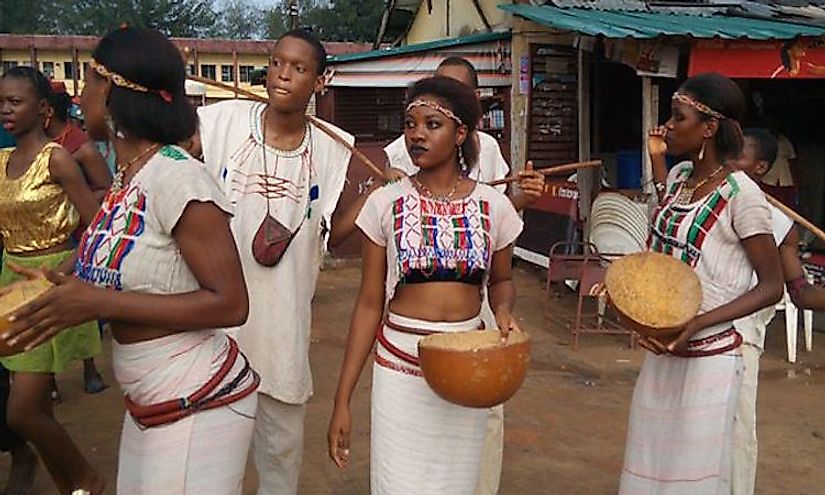Ethnic Groups Of Guinea (Conakry)

Guinea is located on the western coast of Africa formally known as French Guinea. The modern Guinea is sometimes called Guinea-Conakry to distinguish it from other countries with similar names like Guinea-Bissau and Equatorial-Guinea. The Republic of Guinea has a population of over 10 million people including thousands of refugees from the neighboring countries like Liberia and Sierra Leon. The population is made up of 24 ethnic groups with Conakry, the capital city, the most ethnically diverse town in Guinea. The majority of the population is Muslims at 85% of the population while about 7% identify with the indigenous religion.
Ethnic Groups Of Guinea (Conakry)
Fulani
Fulani is the most widespread Muslim ethnic group in Sahel and West Africa. In Guinea, the majority of the population, 41%, belong to the Fulani tribe and are mainly found in the Futa Djallon region. Fulani has their roots in the North Africa and is bound together by the Fula language, culture, and religious beliefs. Fulani people are mainly pastoralists making them the largest nomadic pastoralist community in the world. They are primarily sedentary farmers. They follow a code of behavior known as “pulaaku” which is characterized by patience, self-control, honesty, and respect. They have a rich musical culture accompanied by traditional instruments like drums, hoddu, and riiti. Kossam is a major delicacy among the Fulani community. The traditional Fulani people live in temporary dome-shaped houses called bukkaru supported by millet stalk pillars.
Mandinka
Mandinka ethnic group has a worldwide population of over 11 million while in Guinea, 33% of the population belongs to the Mandinka group. Mandinka belongs to the larger Mande people. The Mandinka originated from Mali and gained their independence from the empires in the 13th century. The Mandinka regions have a long history of the slave trade from the 14th century. The Mandinka territory was a major slave source for the Portuguese in the 16th and 18th century. Mandinkas are subsistence farmers who rely on millet, maize, and rice. Marriage among this community is arranged while the oldest male is considered the head of the family. The majority of Mandinka are Muslims while an insignificant number practices traditional African Religion. Villages are autonomous led by a chief. Kankaung is a rite of passage which marks beginning of adulthood. Female genital mutilation is also common among the Mandinkas.
Soussou
Soussou belongs to the Mande people living in Guinea. The Susu community is a patrilineal society which favors cross-cousin marriages. The Susu originated from the mountainous border between Mali and Guinea. 12% of the Guinean population belongs to Soussou ethnic group. They live in an extended family setting with polygyny an accepted practice in the society. Soussou is mainly Muslims with Islam dominating their culture and practices. They have a caste system referred to as “nyamakala.” They believe that the caste have their origin from the medieval slave era. Artisans, carpenters, musicians, and jewelers are in separate caste. Soussou is primarily farmers while women are palm oil makers.
Other Ethnic Groups In Guinea
Other ethnic groups making the population of Guinea include Kissi who accounts for 5% of the population and speak kissi language, the Kpelle who accounts for 5% which is also the largest ethnic group in Liberia, and the Toma. The non-Africans living in Guinea include the Europeans and the Lebanese.
Ethnic Groups Of Guinea (Conakry)
| Rank | Ethnic Group | Share of Population in Guinea |
| 1 | Fulani | 41% |
| 2 | Mandinka | 33% |
| 3 | Soussou | 12% |
| 4 | Kissi | 5% |
| 5 | Kpelle | 5% |
| Other Groups | 4% |







